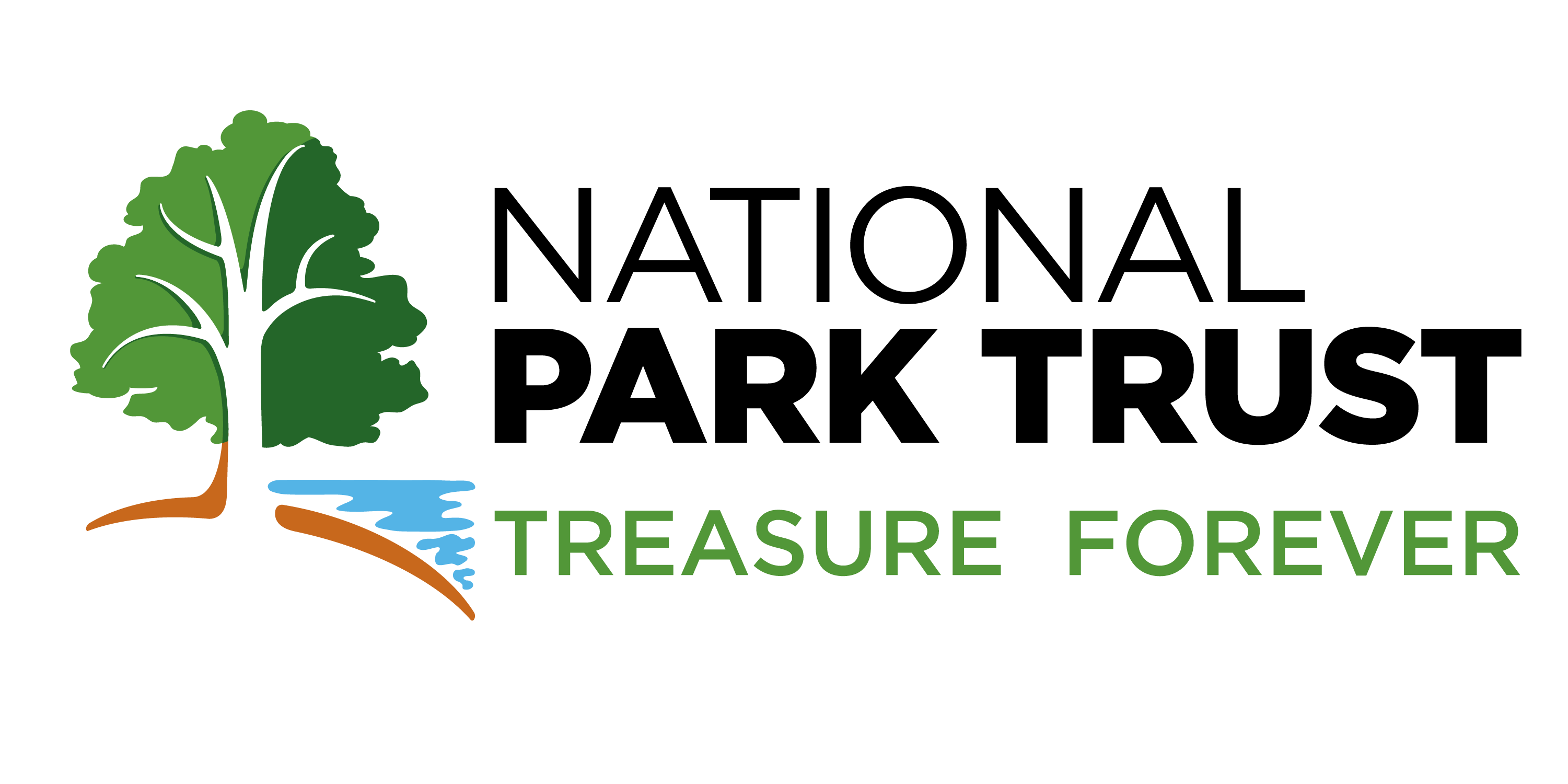Protected Park
Appalachian National Scenic Trail – Bald Mountain, ME
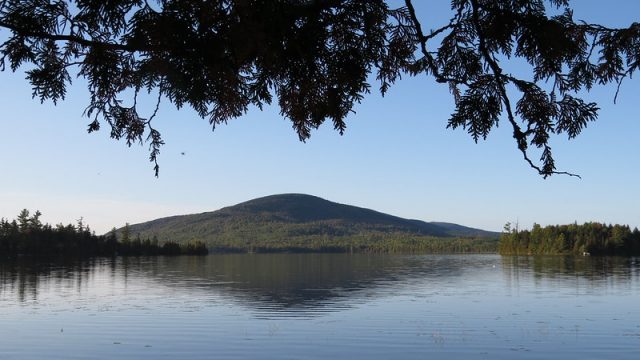
If you’ve seen the pristine waters and lush terrain at Maine’s Bald Mountain Pond, you’d understand why National Park Trust (NPT) worked with The Trust for Public Land (TPL), National Park Foundation (NPF), Appalachian Trail Conservancy (ATC), The Conservation Alliance, and Elliotsville Foundation to acquire 1,495-acres of old-growth woodland to benefit the National Park Service’s Appalachian National Scenic Trail (AT).

The remoteness and scenic views make the property an iconic destination for backcountry adventures. You can paddle Bald Mountain Pond and hike the AT in a single day’s outing. We protected this land from development, preserving the nearby Bald Mountain Pond. It is one of the few bodies of water that holds landlocked arctic char in the lower 48 states. The land is one of the largest 150-year-old forest blocks in central Maine.
On September 20, 2019, we and our partners dedicated a plaque Monson Maine Appalachian Trail Visitor Center in Monson, ME. It honors the contributions by NPS employees, John Kauffmann and Ben Thompson, to the NPS science program.
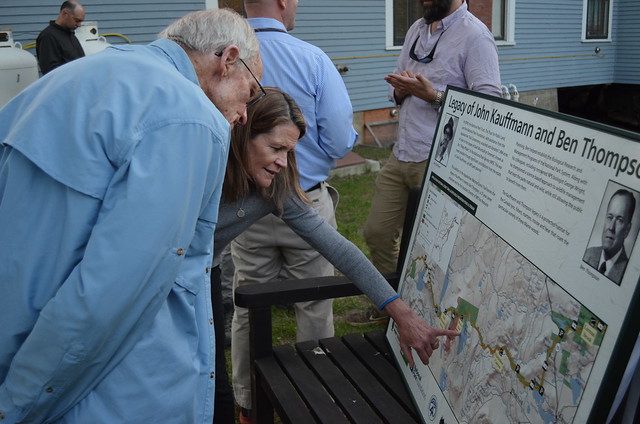
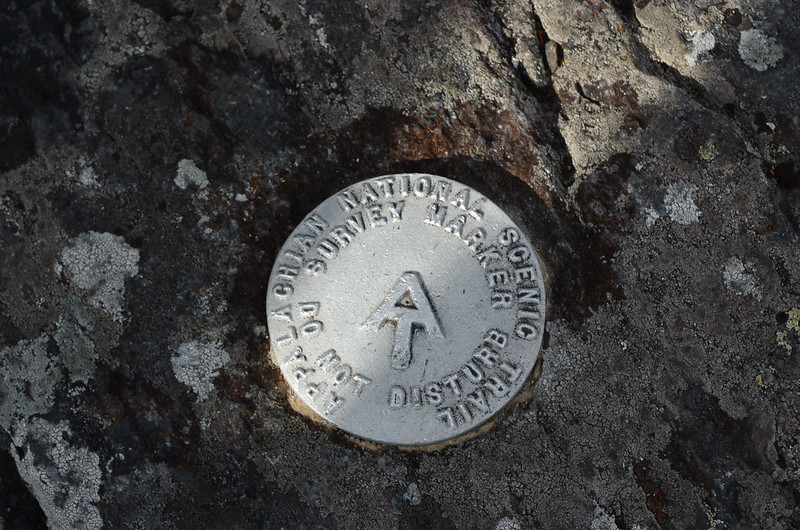
Project Details:
Project Years: 2017-2019
Parcel Size: 1,495 acres
Project Cost: $1,750,000
Park Trust Role: Fund purchase (27%)
Long Term Significance of the Acquisition:
- Protects a unique and threatened natural resource.
- Surrounds 5 miles of the Appalachian National Scenic Trail (A.T.).
- The Trail is the most biologically diverse unit in the National Park System, with more threatened and endangered plant and animals than any other park.
- Preserves intact habitat for many of Maine’s rarest and most iconic species. The pond is one of only 14 water bodies in the lower 48 states with landlocked arctic char, and one of the rarest fisheries in the state.
- The pond hosts a self-sustaining population of genetically native brook trout.
- Adds acreage to a 2.7 million-acre expanse of connected, climate-resilient forest and waters stretching from northern New Hampshire and into western Maine
- Adds to the ecological integrity of the region
- Permanently preserves a 150-year old late successional spruce-northern hardwood forest, one of the largest old-growth forest blocks in central Maine
- The forest is rated an exemplary natural community by the Maine Natural Areas Program.
Value to the Park and Public:
- Preserves a “wild” camping, hiking, fishing and paddling outdoor experience
- Is a significant addition to the National Park System.
- Maintains dramatic and wild views of the pond from a traditional log trail shelter along the A.T.
- Preserves access to the streams and pond as a popular angling destination for wild eastern brook trout.
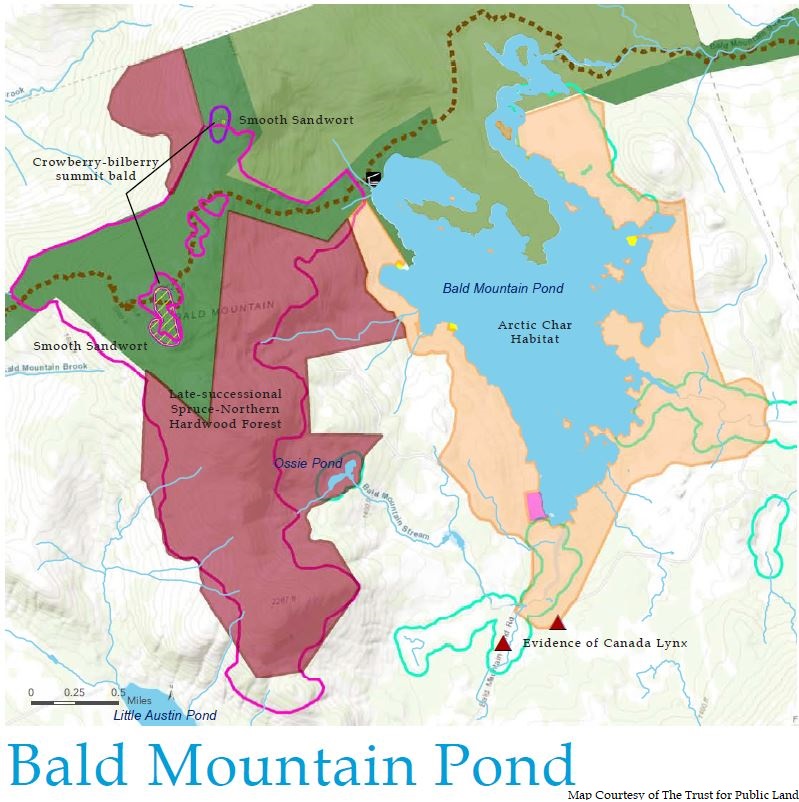
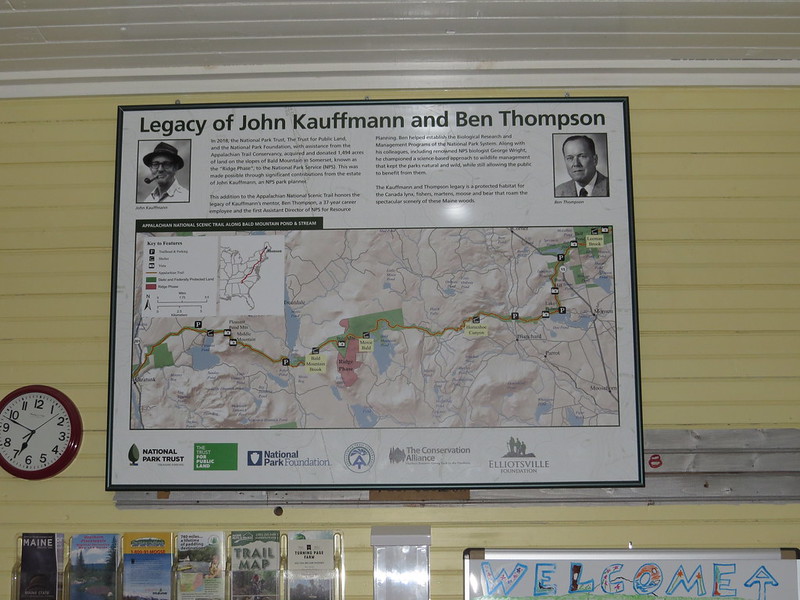
dedication plaque, Monson, ME
This land protection was made possible thanks to extraordinary bequests from John Kauffmann to the Park Trust and the National Park Foundation, wind mitigation funds received by TPL, a generous gift from The Conservation Alliance and grassroots work by the Appalachian Trail Conservancy. TPL bought the land and in June 2019 officially transferred ownership to the National Park Service.
The federally-listed threatened Canada Lynx has been confirmed on the property along with robust populations of North Woods mammals, like moose, fisher, and black bear. Brook trout in the ponds and streams are genetically native to the area. Numerous wetlands have extensive inland waterfowl and wading bird habitat, priority habitat in the Maine Wildlife Action Plan.
Bald Mountain Pond and the 1,494 acres in Somerset, ME are an important part of the region between the White Mountains of New Hampshire and Moosehead Lake. Protecting them will help maintain the ecological integrity of this broader region, a long-term focus of several local, state, and national conservation partners. It is a magnificent addition to the area’s growing network of protected land spanning several hundred thousand acres.
